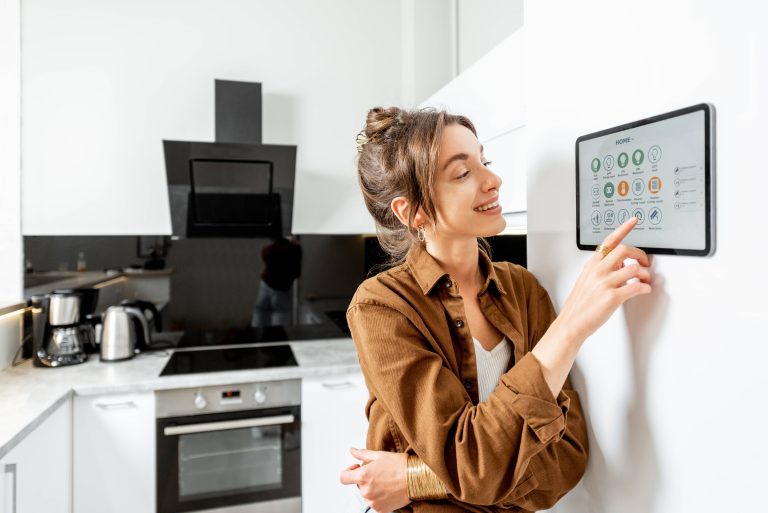
In the ever-evolving world of smart home technology, the smart mirror has emerged as a fascinating addition to the modern household. Often seen as futuristic and potentially complex, a smart mirror combines the reflective properties of a traditional mirror with the capabilities of a functional smart display. Whether it’s for your bathroom, bedroom, or hallway, a smart mirror can provide information on the weather, time, calendar events, and more—all while you’re brushing your teeth or getting dressed. In this comprehensive guide, we’ll walk you through the process of setting up a smart mirror for your home.
Why a Smart Mirror?
Before diving into the setup process, it’s important to understand why you might want a smart mirror:
1. Convenience: A smart mirror can display crucial information such as the weather, news headlines, and calendar reminders, meaning you don’t have to reach for your phone every morning.
2. Health and Fitness Tracking: Some smart mirrors offer integration with fitness apps, allowing you to track your health while getting ready for the day.
3. Entertainment: Enjoy music, videos, or even video calls while standing in front of your mirror.
4. Aesthetic Appeal: Smart mirrors can add a sleek, modern look to any room, enhancing both functionality and style.
Materials and Tools Needed
Setting up a smart mirror involves a bit of DIY expertise. Here’s what you’ll need:
1. Two-Way Mirror: This is a specialized mirror that allows light (from a screen) to pass through from behind while reflecting like a regular mirror.
2. Monitor or Tablet: The display screen for your smart mirror. A monitor is more common due to its size and compatibility.
3. Raspberry Pi: This tiny computer will be the brains of your smart mirror.
4. Frame: To house and hold the mirror and monitor together.
5. Power Supply: Suitable power supply for the Raspberry Pi and monitor.
6. Software: MagicMirror², a popular open-source smart mirror software.
7. Miscellaneous Tools: Tape, glue, screwdrivers, and a drill.
Step-by-Step Guide to Setting Up Your Smart Mirror
1. Prepare the Monitor
Start by disassembling your monitor to remove any unnecessary parts, such as the stand and any extra casing that might add bulk. This step is crucial for fitting the monitor snugly behind the two-way mirror and inside the frame.
2. Build or Purchase the Frame
You have the option to either build a custom frame or purchase one that fits your requirements. Make sure the frame can comfortably house the monitor and the two-way mirror. If building your own, wooden frames are commonly used and can be customized easily.
3. Mount the Two-Way Mirror
Secure the two-way mirror to the frame using adhesive or screws. Ensure the reflective side faces outward. Double-check that the mirror is securely attached and sits flat against the frame to avoid any gaps.
4. Attach the Monitor
Position the monitor directly behind the two-way mirror, facing outwards so its display can be viewed through the mirror. Secure the monitor to the frame using brackets or strong double-sided tape. It’s essential that the monitor remains stable and firmly in place.
5. Set Up the Raspberry Pi
Before physically attaching the Raspberry Pi, you’ll need to install the MagicMirror² software. Follow these steps:
1. Download and install the latest version of Raspbian OS on your Raspberry Pi.
2. Connect your Raspberry Pi to a monitor, keyboard, and mouse.
3. Open the terminal and install MagicMirror² by following the official MagicMirror installation guide.
4. Configure the software by editing the config.js file to customize the modules you want to display (like weather, news, calendar, etc.).
Once the software setup is complete, attach the Raspberry Pi to the back of the monitor using double-sided tape or any other securing method.
6. Power Everything Up
Connect the Raspberry Pi and the monitor to their power sources. Proper cable management is essential to keep everything tidy. You may need to drill holes in the frame to pass cables through neatly.
7. Final Adjustments
Boot up your smart mirror and ensure all components are functioning correctly. You can further customize the software settings to tailor the mirror to your preference. Some useful modules you can add include:
– Weather Forecast: Display current weather and future forecasts.
– Calendar: Sync with Google Calendar or other calendar services.
– News Feed: Get the latest headlines while getting ready.
– Compliments: A fun module that offers positive affirmations.
– Smart Home Integration: To control or view information from other smart devices in your home.
Maintenance and Troubleshooting
Like any smart device, your smart mirror will require occasional maintenance and updates:
1. Software Updates: Regularly check for updates to the MagicMirror² software and any modules you have installed.
2. Monitor Health: Ensure the monitor is properly ventilated to prevent overheating.
3. Cleaning: Clean the mirror surface regularly using glass cleaner to maintain its reflective clarity.
Conclusion
Creating your own smart mirror can be a rewarding project that adds both functionality and a futuristic feel to your home. With the right tools and a bit of patience, you can integrate this innovative technology seamlessly into your daily routine. So, gather your materials, follow the steps, and soon enough, you’ll have a smart mirror that is the envy of all your house guests. Welcome to the future of smart home living!







